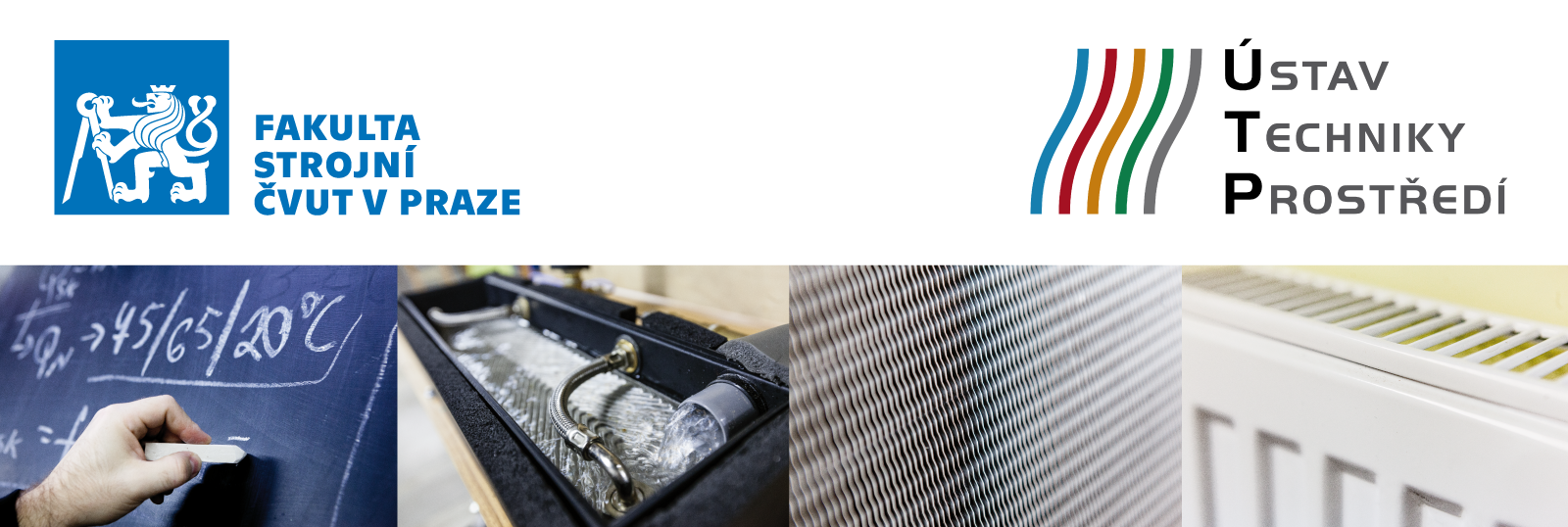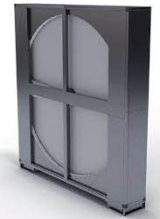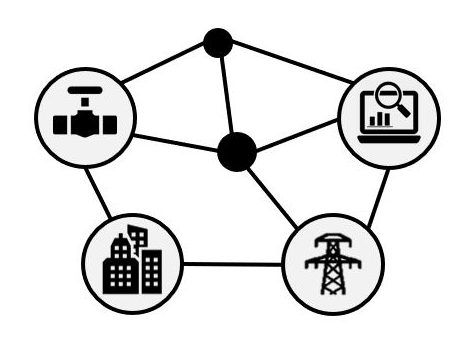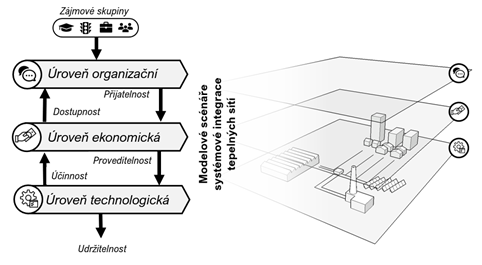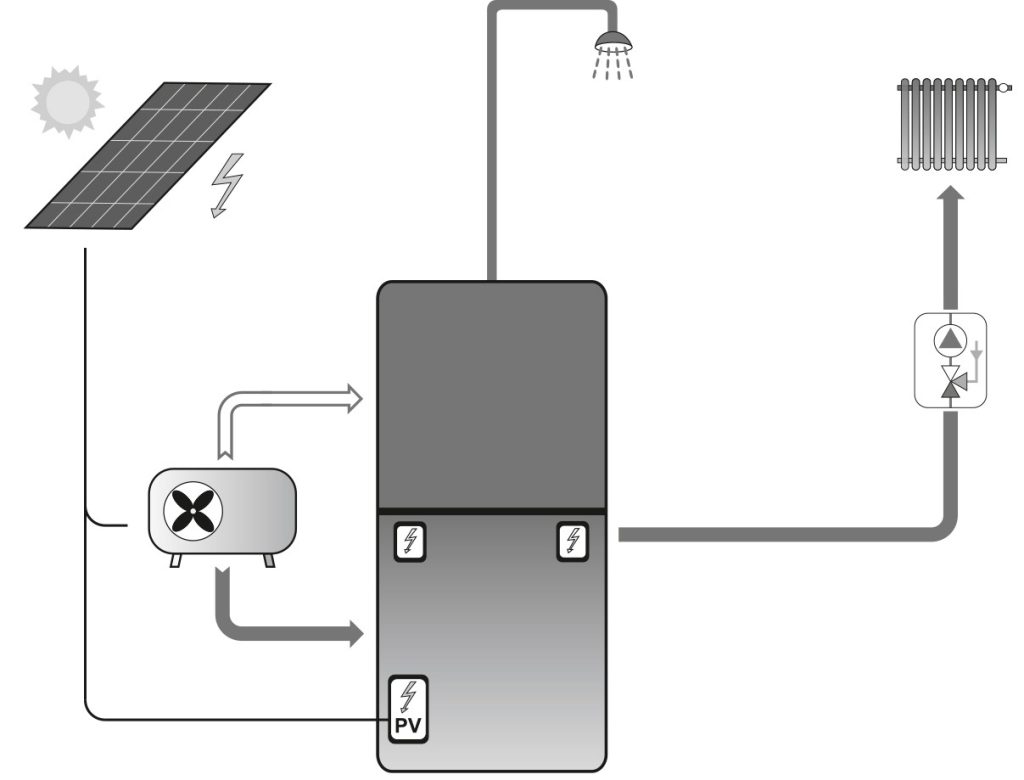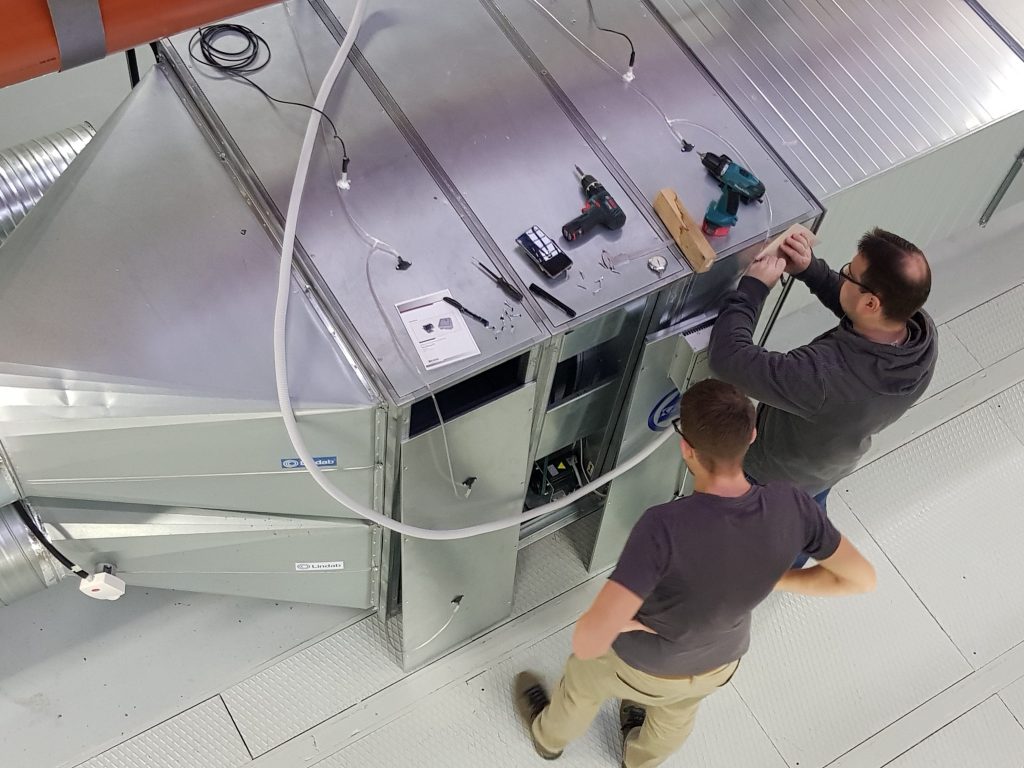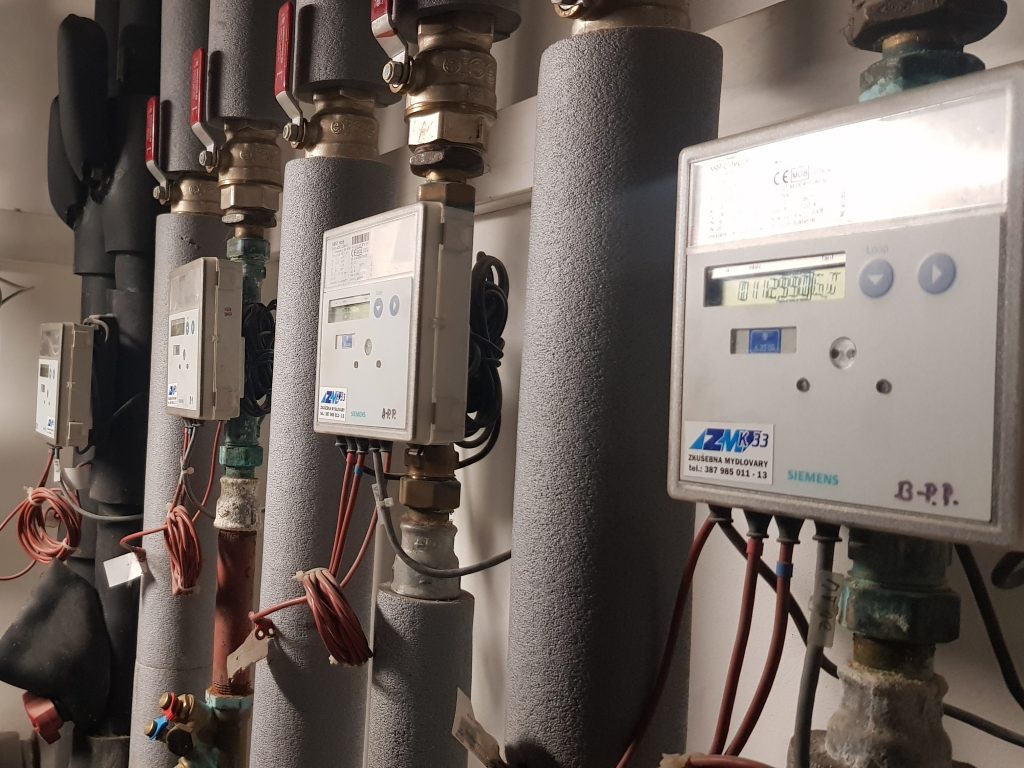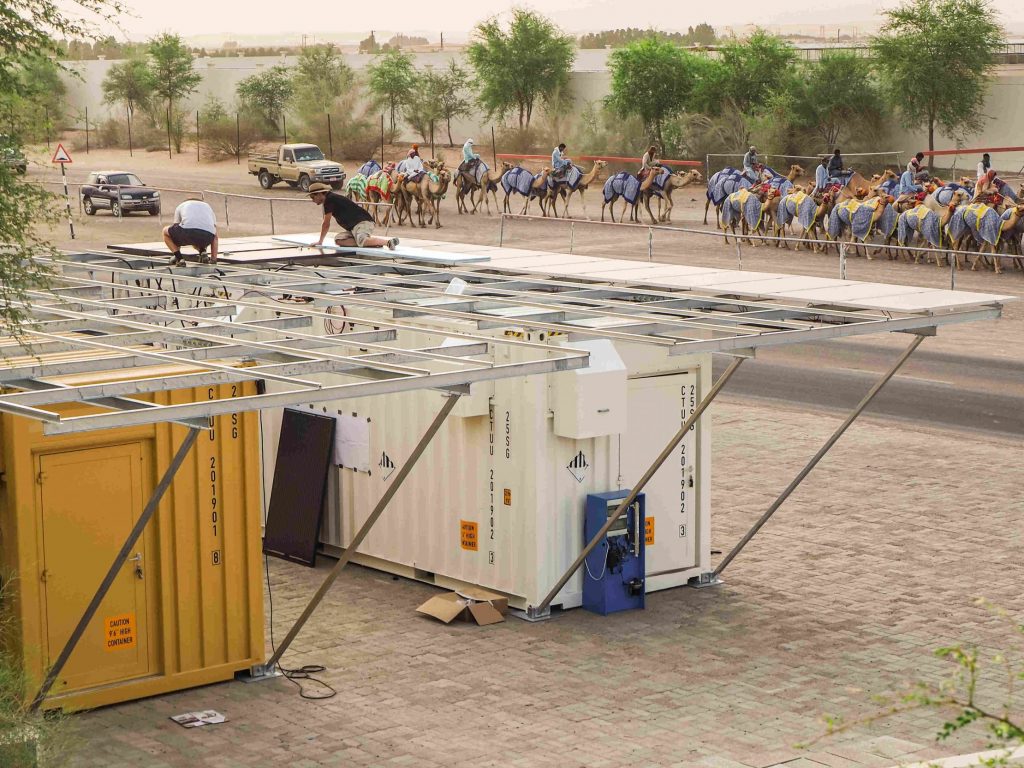Výzkum
Výzkum v oboru je zaměřen na problematiku návrhu a hodnocení technických zařízení určených k úpravě stavu venkovního i vnitřního životního prostředí. Hlavní oblasti výzkumu zahrnují zařízení na úpravu mikroklimatu a čistoty ovzduší v obytném i pracovním prostředí (větrací, vytápěcí a klimatizační zařízení), zařízení pro zásobování teplem a na využití obnovitelných zdrojů energie, zařízení na snižování hluku a vibrací a ochranu a monitorování čistoty venkovního ovzduší.
Teoretickým základem oboru jsou vedle matematiky mechanika tekutin, přenos tepla a hmoty, základy technické akustiky a teorie chování partikulárních látek. Kromě aplikace teoretických základů se ve výzkumu využívá metod matematického modelování (CFD) a simulace procesů i pokročilých experimentálních metod.
Naše laboratoře jsou vybaveny moderními měřicími přístroji a zařízeními. Ústav má k dispozici dvě měřicí komory pro výzkum proudění ve vnitřním prostředí, prostor pro výzkum a zkoušení otopných ploch, zemní vrt pro využití geotermální energie, komoru pro výzkum proudění a šíření znečišťujících látek v čistém prostoru, hlukovou a solární laboratoř, komoru pro výzkum depozičních procesů.
Výzkumné projekty
Publikační činnost
Mezinárodní vědecké časopisy
Energy and Buildings (2022). https://doi.org/10.1016/j.enbuild.2022.112135
The data collection process for thermal energy storage (TES) system is largely still and restricted to data collection only. This leaves a gap to study the transient state physical process of charge and discharge as it proceeds. In addition, these devices are restricted and cannot perform on spot model fitting, prediction and other data curation techniques. This paper demonstrates the application of intelligent data layer with neural networks for evaluating and predicting end to end performance of heat pump integrated stratified thermal energy storage (TES) system.
Energy and Buildings (2022) https://doi.org/10.1016/j.enbuild.2021.111536
The article describes an experimental development of a new prototype of the horizontal plate shower exchanger for wastewater heat recovery. The prototype is designed so that while achieving the highest possible value of efficiency, it also respects the requirements of the spatial arrangement of the heat exchanger casing and, thus, allows an appropriate flow of wastewater on both sides of the heat transfer surface. At the same time, emphasis is placed on the smallest possible height of the heat exchanger casing with regard to the minimisation of the built-up space and the expected wastewater flow during the shower cycle. Experimental testing was performed according to the conditions meeting the certification criteria of the Passive House Institute, while for a given heat exchanger, the investigated flows and water temperatures, as well as the heat transfer efficiency of the new prototype was determined, reaching peak values of up to 62%. An energy analysis and derivation of the equation was also performed, according to which it is possible to determine the achieved heat savings in the preparation of domestic hot water from the heat transfer efficiency of the exchanger, including all heat losses of the system. With new prototype, heat savings more than 21% are achieved.
Build. Simul. (2021). https://doi.org/10.1007/s12273-020-0753-8
Due to the different approaches in determining the ventilation airflow rate per person for workspaces, where high-temperature air conditioning systems are used for air conditioning, problems with the condensation of water vapour on the cold surfaces of the system can occur. The article analyses the risk of condensation in various European cities using the available climatic data. Systems with cooling ceilings and cooling beams with a ventilation device operating in parallel are taken into account. Different ventilation airflow rates per person were analysed. On the example of a room equipped with high-temperature cooling, an energy simulation calculation is performed, which includes a ventilation and air-conditioning system with the possibility of capacity control. It is clear from the results that the condensation of water vapour can be prevented by technical measures at the cost of reducing the cooling capacity, which can affect the achievement of the thermal comfort of those present. In the end, suitable solutions are discussed, which should already be adopted at the time the device is designed so that the risk of condensation is not a major obstacle in the operation of these energy-efficient systems. An irreplaceable role in the operation of high-temperature cooling systems is played by a measurement and control system with a suitable algorithm to prevent condensation.
Renewable Energy,Volume 154, Pages 1165-1179, ISSN 0960-1481
An efficient storage retains thermal stratification and improves the discharging performance. Turbulent mixing between hot and cold water is the prime source of stratification destruction. In this paper quantification of turbulent missing was achieved on the basis of temperature profile, MIX number, and Richardson number. The evaluated parameters include flow rate, ΔT, and diffuser design, henceforth a direct interdependence between each was thus established. Various CFD models were developed and experimentally validated on the test rig in order to find the optimal working conditions in discharge mode. The results proved numerically that the tank working conditions can be optimized by proper selection of inlet device. For instance, slotted type inlet device sustained maximum stratification even in as adverse a condition as of turbulent inflow & low ΔT. Perforated and simple inlet devices were capable of delivering best discharge efficiency only at low flow rate of 200 l/h and were showing insignificant dependency on ΔT. However, as flow rate is increased, ΔT dependency increased. Seeing the compounded benefits of slotted inlet devices and decreased ΔT, it was concluded that slotted inlet device delivered comparatively better thermal performance at both adverse conditions i.e. high flow & low ΔT and high flow & high ΔT, however, failed to outshine the rest of the inlet devices at low flow rate & low ΔT, and low flow rate & high ΔT. These research findings can serve as guidelines to optimize the storage tank design – more specifically, inlet device based design integrated with heating system, as thermal stratification and COP of heating system – heat pumps, for example, are inherently correlated. Heat pumps are high flow rate and low ΔT devices, while, solar systems are low flow rate and high ΔT devices, Thus, opting for accurate choice of inlet device for a particular operating condition is critical.
Build. Simul. (2020). https://doi.org/10.1007/s12273-020-0629-y
The global energy consumption of data centers (DCs) has experienced exponential growth over the last decade, that is expected to continue in the near future. Reasonable utilization of DC waste heat, which is dissipated during the computational process, can potentially be an effective solution to mitigate the environmental impact. However, the practical implementation of waste heat utilization in the DC environment is a very challenging task. The possible benefits of waste heat utilization are uncertain and difficult to quantify with the methods that are common in practice. This paper introduces a feasibility study in which dynamic simulation tools were used to predict the energy performance of a university campus resulting from the integration of a proposed DC system with an existing aquifer thermal energy storage (ATES). The presented study utilizes building energy simulation (BES) to evaluate uncertainty of the waste heat potential associated to various thermal management strategies of the proposed DC. Further in the feasibility study, the carbon footprint of the integrated approach is assessed for both the current and future situation based on measured data from the existing university campus and its district ATES system.
Mezinárodní konference
Zelenský, P. ., Barták, M., Zmrhal, V. ., & Mázik, J. . (2022). Simulation-Aided Development of a Compact Local Ventilation Unit with the Use of CFD Analysis. CLIMA 2022 Conference. https://doi.org/10.34641/clima.2022.194
The current emphasis on the renovation of existing buildings to meet EU energy efficiency targets brings, in addition to energy savings and related CO2 reduction, also some negative issues. One of them can be the lack of fresh air supply caused by increased air tightness of the building envelope after its insulation and renovation or change of windows. The easy solutions are decentralized units for local ventilation, which can be installed during fast renovations in selected rooms without major building modifications. Controlled ventilation then ensures the delivery of a sufficient amount of fresh air to meet current standards and, at the same time, creates a healthy and comfortable environment for occupants. The paper demonstrates the practical use of CFD simulations for the development of a new type of compact small ventilation unit for local ventilation of rooms with heat and humidity recovery. An increase in the device efficiency and a reduction in acoustic power, while maintaining its very compact dimensions, were achieved with the help of the numerical study. The paper shows the possibility of using CFD analysis during the development of new HVAC appliances. It describes the preparation of the numerical model of the device, presents the simulation approach, including the calculation settings, and discusses device optimization based on variant numerical analyses in ANSYS Fluent. The initial prototype design of the unit was optimized following the findings from the numerical analysis, and it was verified by CFD study that the proposed adjustments were appropriate and that the expected results were achieved. In a separate CFD study, the use of different types of diffusers at the air outlet from the supply duct to the room was addressed. It was recommended to use adjustable nozzles, which allow one to direct the air flow into the room according to the user’s preference. Consequently, it was verified that the ventilation unit meets the hygienic noise limits, both for day operation and for night operation with reduced power.
Zavřel, V. ., Zelenský, P. ., Macia, J. ., Mylonas, A. ., & Pascual, J. . (2022). Simulation aided development of a façade-integrated air handling unit with a thermoelectric heat exchanger. CLIMA 2022 Conference. https://doi.org/10.34641/clima.2022.20
The paper presents a simulation aided development of a new type of a façade-integrated air handling unit for local ventilation of rooms. The unit is developed as a part of the Plug-and-Use (PnU) concept within the H2020 project PLURAL. Unlike conventional local ventilation units designed solely for ventilation, the developed air handling unit has a two-stage heat recovery that combines a passive and an active heat exchanger. The active heat exchanger consists of an array of thermoelectric elements and provides the flexible and energy efficient capability of temperature control of supplied ventilation air. The paper demonstrates the practical use of building energy simulations for the development of the unit. A combined simulation approach was used, while the IDA ICE software addressed the indoor CO2 concentration and related ventilation volume flow rates used for the TRNSYS software, which predicted energy performance and indoor thermal conditions. In the TRNSYS, a numerical representing the initial prototype of the air handling unit was prepared. This sub-model was integrated into the TRNSYS building model of the real installation demo site, namely, the Terrassa building, Barcelona, Spain. A variant numerical analysis was performed with two different compositions of the building envelope (pre- and post-renovation) and several ventilation control strategies and air handling unit operation settings. The performed simulations were capable to predict the performance of the innovative device in the real-case arrangement, under various scenarios, on the scale of the entire building. The simulation analysis demonstrated that the façade integrated air handling unit can clearly improve the IAQ conditions and reduce the overheating in the case when no other cooling system is available. The simulations provided an important navigation for the design team to further develop the innovative device.
Zavřel, V., Šimek, J., Bäumelt, T., Martínek, V., Mishukov, A., & Barták, M. (2022). Experiment-based testing routine to characterize building energy flexibility for potential aggregators. CLIMA 2022 Conference. https://doi.org/10.34641/clima.2022.356
The ultimate goal is to introduce a standardized routine to characterize flexibility of a given building for the purpose of potential flexibility aggregators. The routine should provide the characteristic demand response of the building under various smart-grid control signals (e.g. time-of-use (stage) pricing, real-time pricing etc.). The scope of this paper is limited to the experimental part, that demonstrates measured demand response provoked by testing sequences. The testing sequences were applied via cloud-based service to the building management system (BMS) of a mid-size office building in Prague. The evaluation is not limited only to power metering but also includes indoor environment quality (in terms of room air temperatures and CO2 concentrations), HVAC system and local meteorological data monitoring. The air handling unit (AHU) and cooling system response were investigated using ‘step’ and ‘modular’ testing sequences. The real-life experiments revealed authentic demand response allowing to characterize building flexibility in full details. The key findings are, that the operation of the HVAC system components can be blocked for relatively long period of time (2 to 5 hours in studied case) without any critical consequences to the indoor environment quality. Approximately 30 % of the total power load per the testing event can be considered as flexible. The quality of the power profile was found highly irregular. Due to the power profile fluctuation the ramping/modulation at the single building level was found ineffective. In contrary to the modular control, the multi-stage control led to more detectable power reduction. The stage type of control provoked more observable, reliable, and easier-to-predict demand response.
In: Proceedings of Building Simulation 2019: 16th Conference of IBPSA. International Building Performance Simulation Association, 2020. p. 1824-1831. BS 2019. vol. 16. ISSN 2522-2708. ISBN 978-1-7750520-1-2.
This paper introduces an innovative concept of an autonomous curtain walling façade module. The façade module integrates functions of heating, cooling, ventilation, lighting, shading as well as renewable energy storage and generation to the façade structure. The main contribution of the presented research is the development and validation of a new numerical model representing the in-façade air-conditioner using thermoelectric cells. The model captures its hygro-thermal and electrical behaviour and provides a satisfactory agreement with measurements of an experimental setup.
In: Central Europe towards Sustainable Building (CESB19). Bristol: IOP Publishing Ltd, 2019. IOP Conference Series:Earth and Environmental Science. vol. 290. ISSN 1755-1307.
The contribution of buildings towards energy consumption has dramatically increased over the past decade. According to the EC’s Joint Research Centre, HVAC systems in Europe were estimated to account for approximately 11% of electricity consumed in Europe [1] and with associated CO2 emissions highly contribute to global climate change. This paper deals with the electricity consumption of air-conditioning systems in buildings in the Czech Republic. The paper presents results of actual measurements in 15 mostly office buildings over a 5 year period. The extensive analysis of measured data is presented in graphs and tables. A considerable difference in the electricity consumptions for cooling between the various administrative buildings is identified. The advanced commissioning of air-conditioning systems and its general application in the Czech buildings is presented in the paper as well. Energy consumption measurements, proper operation and application of advanced commissioning are identified as important methods tool to reduce energy consumption of airconditioning systems in existing buildings.
In: Central Europe towards Sustainable Building (CESB19). Bristol: IOP Publishing Ltd, 2019. IOP Conference Series:Earth and Environmental Science. vol. 290. ISSN 1755-1307.
Waste water heat recovery is currently one of the possible ways how to reduce energy performance of buildings. The mathematical model using specific heat pump parameters is presented in this article. The aim was to verify efficiency of the waste water recovery system with heat pump for domestic hot water heating in family houses. The model enabled to evaluate heat recovery effectiveness during a day cycle. The first set of simulations of a typical day cycle has shown that the heat pump with recuperation of waste water is not effective solution for family houses. However, it might be interesting for the objects with larger consumptions. Another simulations for these objects were performed and more promising results were reached.
In: Central Europe towards Sustainable Building (CESB19). Bristol: IOP Publishing Ltd, 2019. IOP Conference Series:Earth and Environmental Science. vol. 290. ISSN 1755-1307.
Realistic energy balance of photovoltaic system has a direct impact on realistic economic evaluation of operation costs for given building. To estimate the realistic electricity power profile with a short-time step, a generator based on appliances power, occupancy and external daylight presence has been developed and used for simulations. Generator allows to create different power profiles for the whole year (all days identical, workdays-weekends, 365 different days) with given time-step resolution (from 1 minute to 1 day). Paper presents and analyses the results from parametric simulations of PV production and building electricity loads balance with different times-steps. Monthly calculation approach used as a standard methodology for building performance evaluation significantly overestimates the solar fraction of PV systems. Only calculations with time steps shorter than 1 hour lead to results close to reality. A methodology for monthly balance correction to realistic results based on yearly PV production to building consumption ratio will be presented.
-
Obhájené disertační práce
Králíček, J. Aerdynamický hluk lopatkových mříží při nízkých machových číslech, Praha: ČVUT, Fakulta Strojní. 2022. 161 s
Schemelin , V. Kombinovaný solární kolektor vzduch-kapalina, Praha: ČVUT, Fakulta strojní, 2020. 135 s
Pokorný , N. Zasklený kapalinový fotovoltaicko-tepelný kolektor, Praha: ČVUT, Fakulta strojní, 2020. 122 s
Boháč, J. Dynamické chování otopných ploch ve vazbě k řízení jejich tepelného výkonu, Praha: ČVUT, Fakulta strojní, 2019. 118 s
Zelenský, P. Optimum Representation of Heat Sources in Simulations of Airflow in Indoor Environment, Praha: ČVUT, Fakulta strojní, 2019. 109 s.
Tóth, L. Model vířivého anemostatu. disertační práce. Praha: ČVUT, Fakulta strojní, 2013. 149 s.
Šourek, B. Potenciál optických rastrů v technice prostředí. The potential of optical raster made of glass in environmental engineering. Praha: ČVUT, Fakulta strojní, 2012. 97 s.
Krainer, R. Nové metody hospodárného dimenzování systémů s tepelným čerpadlem a svislými zemními vrty. Praha: ČVUT, Fakulta strojní, 2011. 105 s
Šťávová, P. Experimental evaluation of ventilation in dwellings by tracer gas CO2. Praha: ČVUT, Fakulta strojní, 2011. 154 s.
Nosek, Š. Mikrokogenerační jednotka s hybridním Stirlingovým motorem. Praha: České vysoké učení technické v Praze, 2010. 157 s.
Hruška, A. Depozice aerosolů ve vnitřním prostředí Indoor aerosol deposition. Praha: ČVUT, Fakulta strojní, 2010. 161 s.
Duška, M. Akumulace tepla ve výpočtu tepelné zátěže klimatizovaných prostorů. Praha: ČVUT, Fakulta strojní, 2010. 161 s.
Kučera, M. Aerodynamické zdroje hluku při nízkých Machových číslech. Praha: České vysoké učení technické v Praze, 2010. 167 s.
Kučera, V. Využití slunečního záření při vytápění budov, zejména se zřetelem k redistribuci tepla z osluněných do neosluněných místností budov. Praha: České vysoké učení technické v Praze, 2009. 105 s.
Braniš, M. Tříděný odběr vzorků emisí. Praha: České vysoké učení technické v Praze, 2009. 147 s.
Forejt, L. Airflow performance modeling in mobile operating rooms. Praha: České vysoké učení technické v Praze, 2009. 105 s.
Schwarzer, J. Svislý stěnový neizotermní proud. Praha: České vysoké učení technické v Praze, 2008. 100 s.
Hojer, O. Optimalizace radiační geometrie světlých zářičů Optimization of Gas Luminous Heaters Radiation Geometry. Praha: České vysoké učení technické v Praze, 2008. 205 s.
Lain, M. Nízkoenergetické chlazení budov. Praha: České vysoké učení technické v Praze, 2008. 101 s.
Barták, M. Numerické modelování turbulentního proudění ve větrané místnosti. Praha: České vysoké učení technické v Praze, 2007. 76 s.
Vavřička, R. Proudové a teplotní pole u deskových otopných těles. Praha: České vysoké učení technické v Praze, 2007. 149 s.
Vybíral, P. Intenzifikace pulzní regenerace průmyslových filtrů. Praha: České vysoké učení technické v Praze, 2007. 100 s.
Nesvadbová, S. Dynamika vytápěcích systémů s tepelným čerpadlem a různým stupněm akumulace. Praha: České vysoké učení technické v Praze, 2007. 221 s.
Zmrhal, V. Tepelný komfort a energetická bilance systému s chladicím stropem. Praha: ČVUT, Fakulta strojní, 2005. 184 s.
Matuška, T. Transparentní tepelné izolace a jejich použití v solární technice. Praha: ČVUT, Fakulta strojní, 2003. 174 s.
Václavek, L. Optimisation of air-temperature control in a three-zone food transportation trailer using multiple evaporators. Praha: ČVUT, Fakulta strojní, 2003. 192 s.
Doubek, P. Pulzní regenerace průmyslových filtrů. Praha: ČVUT, Fakulta strojní, 2001. 86 s.
Putta, L. Optimalizace distribuce vzduchu z hlediska hluku. Praha: ČVUT, Fakulta strojní, 2001. 159 s.
Neužil, M. Kombinovaná soustava sálavého vytápění a zdrojového větrání. Praha: ČVUT, Fakulta strojní, 2000.
Bašta, J. Intenzifikace konvekční složky tepelného výkonu deskových otopných těles. Praha: ČVUT, 2000. 172 s.
Dunovská, T. Matematické modelování a počítačové simulace tepelné bilance při návrhu obytných budov. Praha: ČVUT, 1999. 128 s.
Hach, L. Adaptivní regulace otopné soustavy Crittall. 1999.
-
Řešené doktorandské práce
PROUDĚNÍ U DESKOVÝCH OTOPNÝCH TĚLES
Doktorand: Ing. Tomáš Legner
Školitel: prof. Ing. Jiří Bašta, Ph.D.
ANOTACE: Disertační práce se zabývá posouzením vlivu geometrie a natočení distančního kroužku na teplotní a rychlostní pole u deskových otopných těles. Součástí výzkumu je experimentální část věnovaná porovnání deskových otopných těles s různými typy distančních kroužků a využití těchto dat pro další část, a to odladění simulačního modelu deskového otopného tělesa v simulačním prostředí Fluent. Cílem je tedy zmapovat rychlostní a teplotní pole u deskových otopných těles a optimalizovat distanční kroužky z hlediska maximální rovnoměrnosti zatékání do jednotlivých kanálků uvnitř tělesa.
TECHNICKÉ SYSTÉMY UDRŽITELNÉ BUDOVY
Ph.D. student: Ing. Jiří Novotný
Školitel: doc. Ing. Tomáš Matuška, Ph.D.
ANOTACE: Tématem disertační práce je vytvořit optimalizační nástroj pro vícekriteriální analýzu pro jednu budovu v rámci simulačního programu TRNSYS. Cílem bude komplexní hodnocení technických systémů vzhledem k neobnovitelné primární energii, emisím CO2 a celkovým finančním nákladům. Bude použita stochastická metoda Monte Carlo s patřičnou citlivostní analýzou. Smyslem této práce je možnost výběru nejvhodnější kombinace technických systémů pro splnění předem požadovaných parametrů či standardů.
IMPROVING THE ENERGY STORING CAPABILITIES IN HOT WATER STORAGE TANKS UTILIZING CFD TOOLS
Ph.D. student: Yogender Pal Chandra
Supervisor: Doc. Ing. Tomáš Matuška, Ph.D.
ABSTRACT: Domestic hot water usage is responsible for about 17 to 39% of household energy consumption. To operate effectively as energy storage devices, it is crucial that a stratified temperature distribution is maintained within the tank during operation. This research deals with the factors influencing the energy storage and its degradation, and how this degradation can be prevented during different operational condions, and finally chooing possibly best combination of geometrical, operational and other technical parameters of the storage tanks to aim the near zero energy waste. The experimental and numerical work would be done collobratively at University Centre for Energy Effecient Buildings (UCEEB) and Czech Technical University in Prague. ANSYS – Fluent would be used as numerical tool for this research work.
ENERGETICKÁ SPOTŘEBA KLIMATIZAČNÍCH SYSTÉMŮ
Doktorand: Ing. Jakub Šimek
Školitel: prof.dr.ir. Jan L.M. Hensen
Školitel specialista: Ing. Miloš Lain, Ph.D.
ANOTACE: Budovy ve vyspělých státech spotřebovávají více než 40 % primární energie. Z řady výzkumů však vyplývá, že značná část spotřeby energie je spojena s poruchovým či nesprávným provozem technických zařízení budov. Optimálním provozem těchto systémů, by tak mělo být možné ušetřit značné množství energie. Cílem této práce je vytvořit metodiku pro optimalizaci provozu klimatizačních systémů budov s hlavním zaměřením na minimalizaci spotřeby energie. Práce bude řešit problematiku především rozsáhlých objektů, typicky administrativních budov. Pro řešení budou využity prostředky dynamické simulace (TRNSYS) a optimalizace.
TEPELNÁ ČERPADLA PRO DOMY S NÍZKOU POTŘEBOU TEPLA
Doktorand: Ing. Radek Červín
Školitel: Doc. Ing. Tomáš Matuška, Ph.D.
ANOTACE: Disertační práce se věnuje kompaktním větracím jednotkám s tepelným čerpadlem (z anglického Exhaust Air Heat Pump, dále EAHP). Technologie EAHP je velmi rozšířená v severských zemích, avšak v ostatních lokalitách jsou tato čerpadla instalována zřídka. Součástí práce je měření parametrů komerční EAHP a tvorba matematického modelu, pomocí kterého bude možné porovnat různé konstrukční řešení, způsoby řízní a zapojení do systémů budov. Hlavním cílem disertační práce je vytvoření zjednodušeného přístupu k modelování EAHP a jejich úspoře v budově, který by byl použitelný pro hodnocení energetické náročnosti budov v rámci úředního hodnocení české legislativy bez potřeby počítačových simulací.
PRŮMYSLOVÁ FILTRACE U SPALOVÁNÍ BIOPALIV KYSLÍKEM VE FLUIDNÍ VRSTVĚ
Doktorand: Ing. Ondřej Červený
Školitel: doc. Ing. Vladimír Zmrhal, Ph.D.
Školitel specialista: doc. Ing. Jiří Hemerka, CSc; Ing. Pavel Vybíral, PhD
ANOTACE: Tématem disertační práce je vytvořit optimalizační nástroj pro vícekriteriální analýzu pro jednu budovu v rámci simulačního programu TRNSYS. Cílem bude komplexní hodnocení technických systémů vzhledem k neobnovitelné primární energii, emisím CO2 a celkovým finančním nákladům. Bude použita stochastická metoda Monte Carlo s patřičnou citlivostní analýzou. Smyslem této práce je možnost výběru nejvhodnější kombinace technických systémů pro splnění předem požadovaných parametrů či standardů.
PROVOZ SYSTÉMŮ S OZE NA VAZBĚ NA PREDIKTIVNÍ ŘÍZENÍ
Doktorand: Ing. Jan Šafránek
Školitel: Doc. Ing. Tomáš Matuška, Ph.D.
ANOTACE: V rámci disertační práce bude vyvíjen obecný systémový model pro kombinaci kogenerační jednotky ve spojení s FVE a bateriovým úložištěm a prediktivním řízením. Budou provedeny parametrické simulace, na kterých bude ověřena funkce modelu a bude stanoven potenciál zvýšit využití OZE pro zásobování budov elektřinou a teplem. Nakonec bude model použit pro optimalizaci provozu reálné instalace kogenerační jednotky na bázi ORC (Organický Rankinův cyklus, spalování dřevěných pelet) v obci Mikolajice ve spojení s plánovaným fotovoltaickým systémem pro dosažení autonomního provozu. Cílem simulace je navržení vhodného matematického modelu pro regulaci celý systém.
